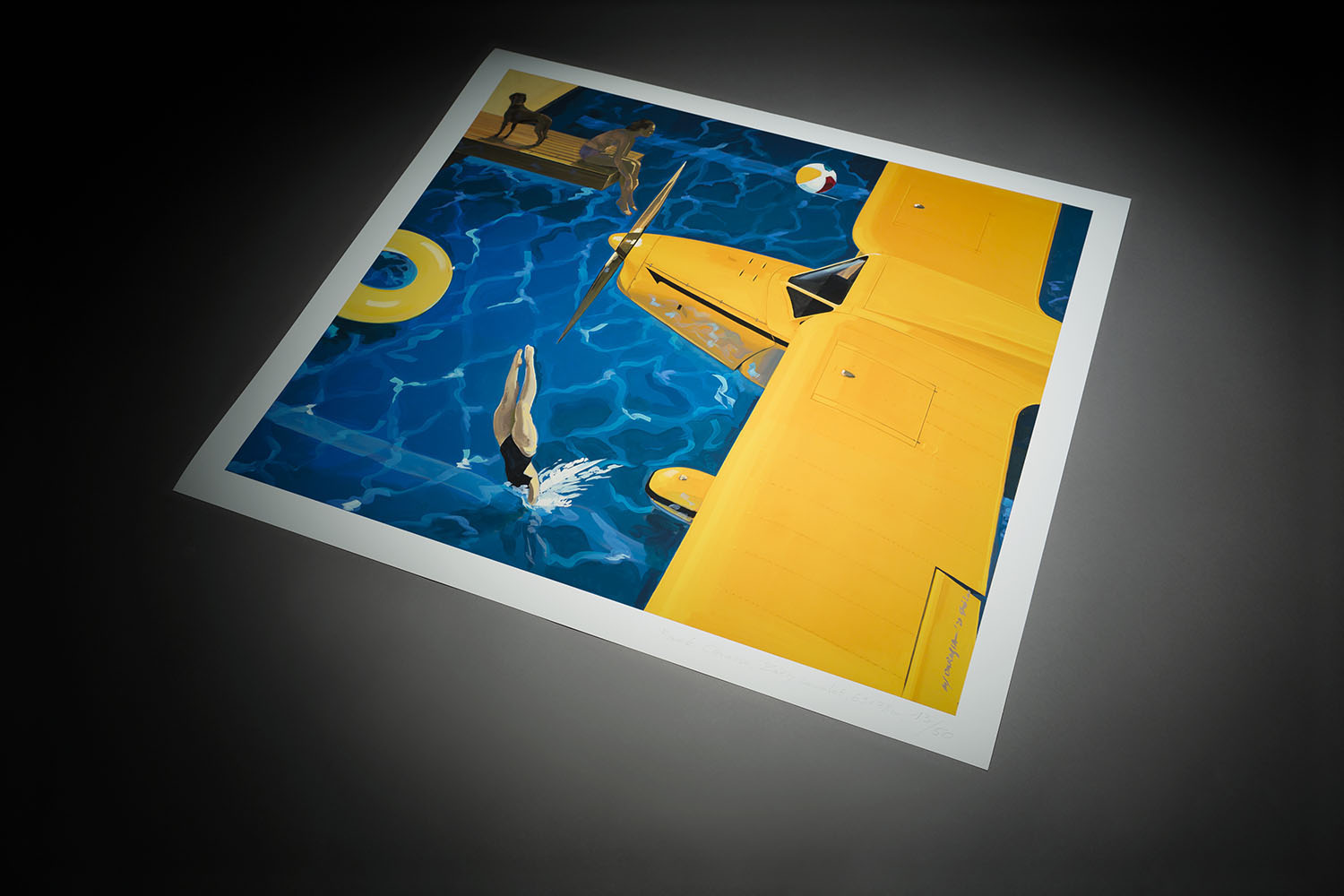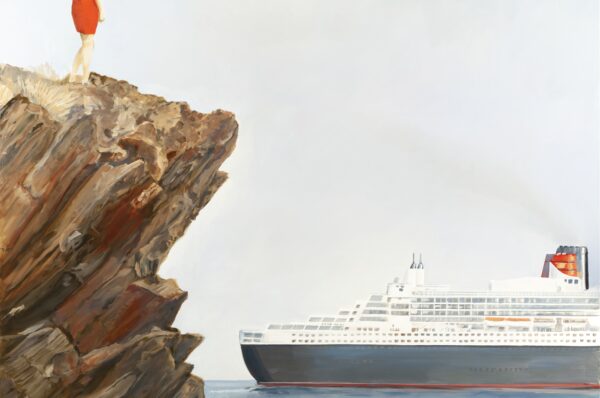
The privilege of the Tricity is the presence of nature, which corresponds with the urban fabric. Great industry neighbors the blue sea and green moraine hills. The windows of apartments and post-industrial areas open up to the amazing space and, consequently, to color. It would be a sin to deprive concrete lofts and glazed attics of color. The art we surround ourselves with often dramatically changes the places where we live. The same is true of abstract painting. It offers infinite possibilities for interpretation because it is non-literal, using painterly Esperanto.
American artist, Helen Frankenthaler – creator of the concept of color field painting – used paints heavily diluted in turpentine on unprimed canvases. She thus created compositions based on chance and the power of color. One of her more beautiful paintings, The Bay, located at the Detroit Institute of Arts in the US, is an excellent example of painting working strongly with color and intuition. I find a similar sensitivity in the works of Aleksandra Szewczuk. Prussian blues or warm ochres interspersed with luscious greens, illuminated by an emerging orange patch, create warm landscapes reminiscent of the very contours of the most beautiful seaside resort – Sopot. Shevchuk’s paintings engage in a dialogue with flagship 20th-century American abstraction, but also refer to the soulful realm of Mark Rothko’s works. The artist emphasized that color and composition tell a story about the human body; in fact, the paintings bring the viewer into a temple of contemplation. Rothko rejected being classified as an abstractionist, although in the late 1940s he completely rejected figuration. His 1960 painting, Untitled, which is in a private collection, works with a saturated hue of red that turns color into meditation. Similarly, Shevchuk’s paintings interact with their surroundings, putting the viewer in a state of tranquility and offering a kind of intimate mantra.
Agnieszka Srokosz’s painting, geometrized and almost mathematical in its expression, has a different effect in interiors. The artist pierces with light her orderly compositions, which recall the industrial character of the former and contemporary Gdynia. Decided magentas or carmines are juxtaposed – sometimes on microscopic canvases – with stark zinc whites, scattered ultramarines. Bold works are created that build up the impression of industrial landscapes. When I look at them, I think of the arteries of New York in Piet Mondrian’s unified landscape of the great metropolis. Broadway Boogie Woogie – painted in the 1940s and in the collection of the Museum of Modern Art in New York – is captivating in its novelty. Srokosz, too, introduces the viewer in a progressive manner to the busy streets, twinkling with neon lights and signal lights at intersections, reflecting the glow of a golden sun setting somewhere over the street cascades.
The contemplative vibration of the sea in Szewczuk’s work, the vibrated fabric of the big city in Srokosz’s canvases and, finally, the last heroine of the painting story – Paulina Rogalska. Her monochromatic, dignified canvases captivate once with calm, once with more saturated color composition. Rogalska uses celadon greens as backgrounds and paints luminous circles into the spotlight, reminiscent of Wojciech Fangor’s Op Art paintings. Her elegant oils perfectly reflect the age of the townhouses, streets and misty atmosphere of Gdansk’s nooks and crannies. Here, the greenish streets suddenly encounter the pale light of street lamps.
The interiors live longer and more intensely with the accompanying paintings, whether on canvases or in the form of incographs. Depending on the space – sometimes more subdued – as if wrapped in gray velour curtains – other times boldly bathed in a luscious feria of colors or ornaments reflecting off mirrors and marbles. Abstract painting dialogues with the interior, defines it, but also tames or even names it, turning it into the gold evoked in the title. Art allows you to transform, with the help of painting virtuosity, an apartment into pure visual magic.
Header illustration: Agnieszka Srokosz Red District, 2022, acrylic on canvas 100×100 cm. Translated with DeepL.com.


